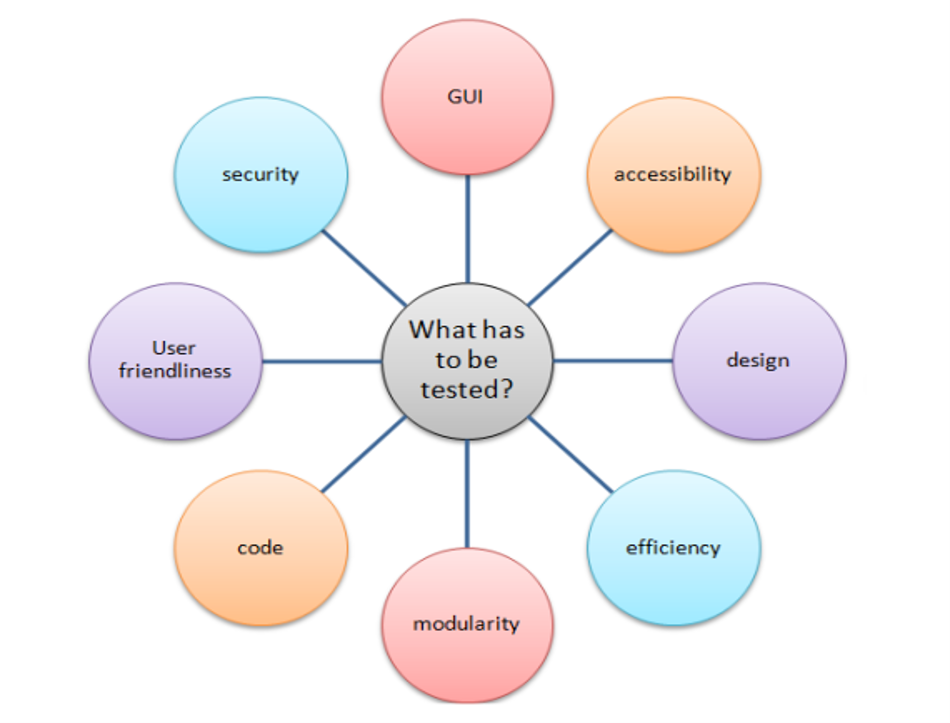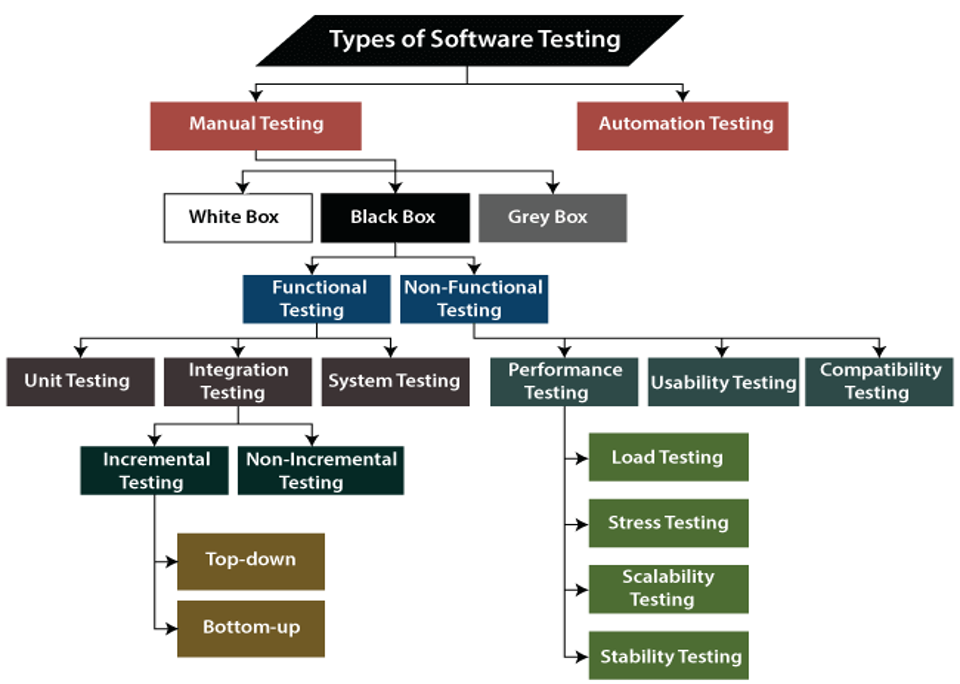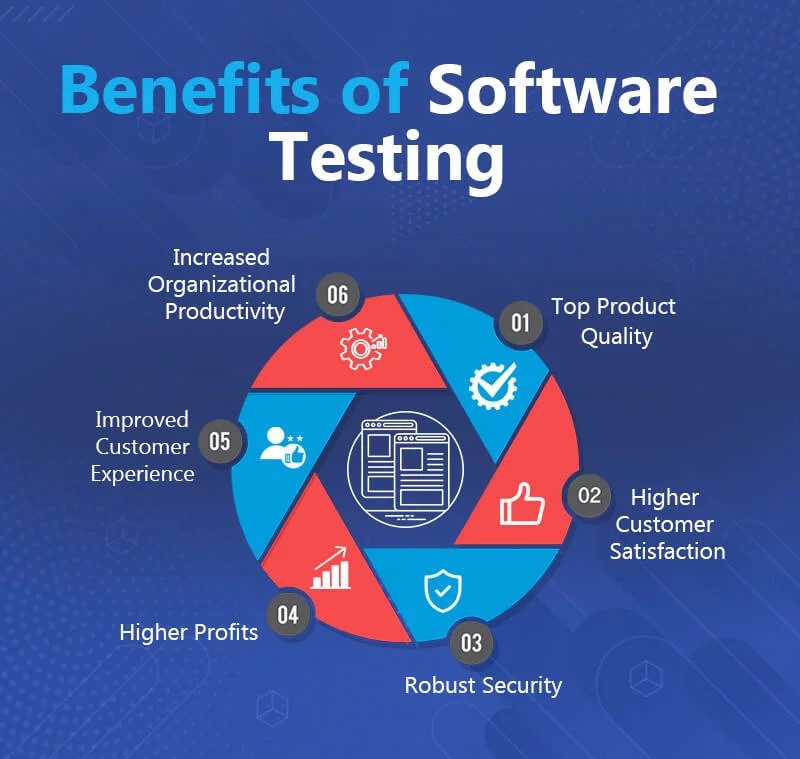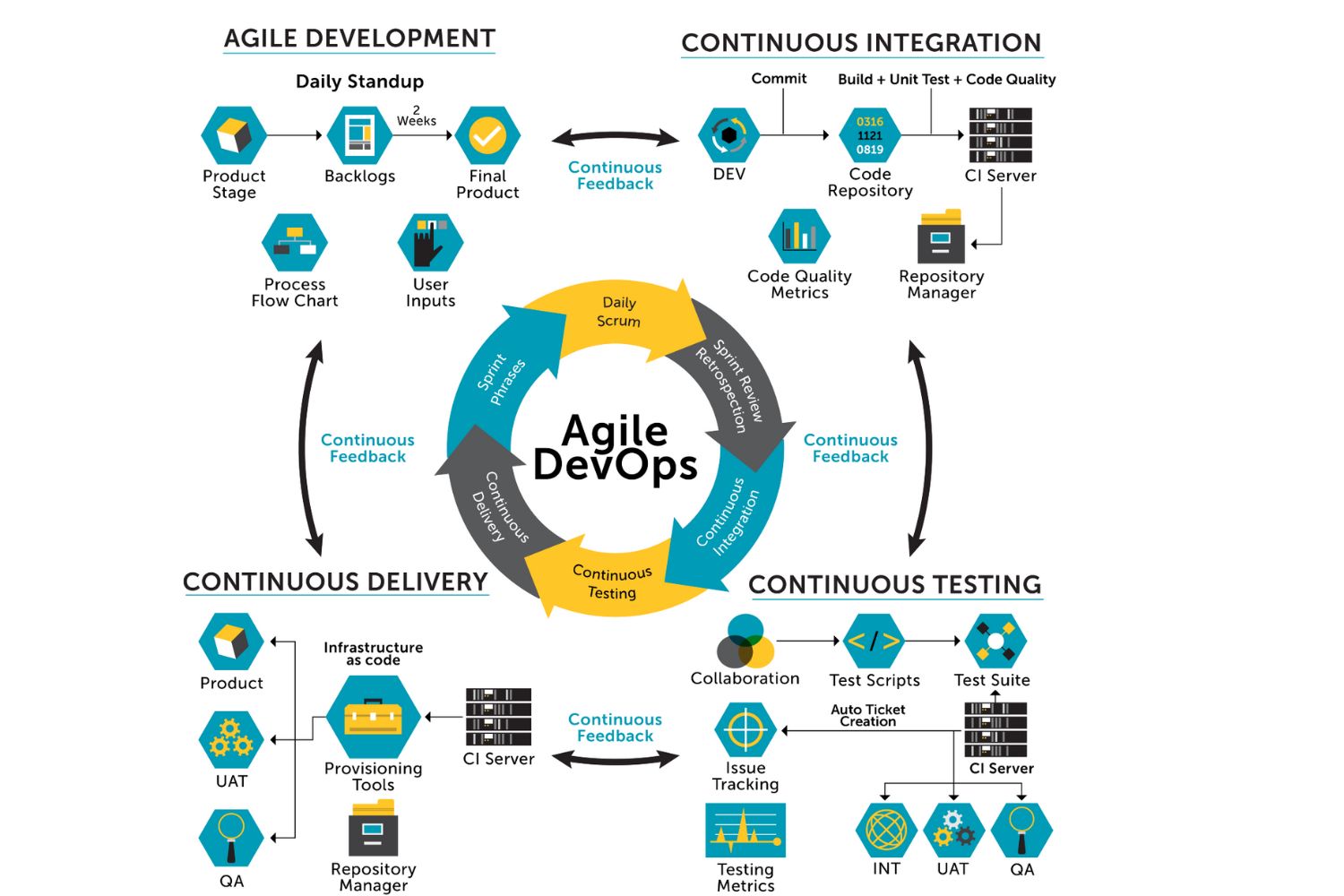Software Testing
SOFTWARE TESTING
Software testing is aimed at identifying and rectifying defects and ensuring the quality and reliability of a program. It involves executing the software to evaluate its performance, functionality, and compatibility with various environments. Testing methods range from manual techniques to automated tools and encompass various levels, including unit, integration, system, and acceptance testing. Comprehensive testing helps detect and mitigate bugs, enhance user experience, and prevent potentially costly post-release issues. It’s an integral part of the software development lifecycle, ensuring that software meets its requirements and operates flawlessly for end-users.
FUNDAMENTALS OF SOFTWARE TESTING
The fundamental principles of software testing revolve around several key concepts. First, testing is not a one-time activity but an iterative process that begins early in the development lifecycle and continues throughout. It aims to discover and fix issues at the earliest stages, reducing the cost and complexity of fixing defects later in the development process.
Second, testing is designed to verify the software against defined requirements and validate its functionality. This includes functional testing, which checks if the software performs its intended tasks correctly, and non-functional testing, which assesses aspects like performance, security, and usability.

Third, testing involves both manual and automated techniques. Manual testing relies on human testers to execute test cases, while automated testing uses tools and scripts to repeat test scenarios efficiently.
Moreover, testing requires a structured approach with well-defined test plans, test cases, and test data. Testers create test cases based on requirements and execute them systematically, recording the results for analysis.
In summary, the fundamentals of software testing encompass early and continuous testing, verification and validation, a combination of manual and automated techniques, and a systematic, structured approach. Effective testing ensures software reliability, quality, and customer satisfaction.
TYPES OF SOFTWARE TESTING
Software testing is a crucial phase in the software development life cycle, and it involves various types of testing to ensure the quality and reliability of a software application. There are two types software testing:
1. Manual Testing 2. Automated Testing
Manual Testing in software testing refers to the process of executing test cases and evaluating the functionality of a software application manually, without the use of any automation tools or scripts. This method involves human testers who assess the software’s behavior, features, and user interface based on predetermined test cases and user expectations. Manual testing helps identify software defects, ensure user satisfaction, and validate that the application meets the specified requirements before its release.
Here are some Common Types of Manual Testing
1. Functional Testing: Evaluates if the software functions according to specified requirements.
2. Usability Testing: Assesses the software’s user-friendliness and overall user experience.
3. Regression Testing: Ensures that new changes or features do not break existing functionality.
4. Exploratory Testing: Testers explore the software to identify defects and unexpected behaviors.
5. User Acceptance Testing (UAT): Validates if the software meets user or customer requirements.
6. Compatibility Testing: Checks how well the software performs on different devices and browsers.
7. Security Testing: Examines the software for vulnerabilities and security issues.
8. Load Testing: Measures the software’s performance under heavy loads or stress..

9. Installation Testing: Verifies the installation and uninstallation processes.
10. Localization Testing: Ensures the software is suitable for specific regions or languages.
2. Automated Testing: Automated testing refers to the use of automated tools and scripts to conduct various tests, verify expected outcomes, and evaluate the functionality of software applications. This process involves the creation of test scripts that can be repeatedly executed to check for bugs, defects, and performance issues. Automated testing helps improve the efficiency and reliability of the testing process, enabling faster feedback on the quality of the software and facilitating the identification of potential issues early in the development cycle.
Here Are Some Common Types Of Automated Testing:
1. Load Testing: Automates the simulation of high user loads to evaluate system performance.
2. Performance Testing: Evaluates the software’s speed, responsiveness, and scalability.
3. API Testing: Automates the testing of application programming interfaces (APIs).
4. Security Testing: Automates the identification of vulnerabilities and security issues in the software.
5. Cross-Browser Testing: Tests the software’s compatibility across different web browsers.
6. GUI TESTING:GUI testing refers to the validating UI functions or features of an application that are visible to the users, and they should comply with business requirements
IMPORTANCE OF SOFTWARE TESTING
Software development process, playing a critical role in ensuring the quality, reliability, and security of software applications. It serves as a vital checkpoint for identifying and resolving defects, bugs, and inconsistencies in the software, thereby enhancing its overall quality. By conducting comprehensive testing, developers can detect issues early in the development cycle, reducing the cost and effort associated with fixing problems later. Effective software testing not only ensures customer satisfaction by delivering a reliable and seamless user experience but also helps in managing risks related to security breaches and data loss. Additionally, it facilitates compliance with industry standards and regulatory requirements, preventing legal and operational complications. Through continuous testing and feedback, software developers can refine and improve their products, fostering innovation and long-term success in an ever-evolving digital landscape. In today’s digital age, where software is omnipresent and powers virtually every aspect of our lives, the importance of software testing cannot be overstated.
Software testing is not only about catching defects but also about meeting industry standards and compliance requirements. Many sectors, such as healthcare, finance, and aviation, have strict regulations and standards that must be adhered to. Software testing ensures that software complies with these rules, reducing legal and financial risks for organizations.
ROLE OF SOFTWARE TESTING
The role of software testing in the software development lifecycle is pivotal, encompassing a wide range of critical functions that contribute to the overall quality and reliability of software applications. One of the primary roles of software testing is to identify and rectify defects or issues within the software. Through various testing methodologies such as unit testing, integration testing, and system testing, testers and developers work together to detect and address bugs and anomalies. This early defect detection is crucial as it significantly reduces the cost and effort required for post-release maintenance and support.
Another vital role of software testing is to ensure that the software meets its specified requirements and functions correctly. Testing verifies that the software behaves as intended, adhering to the design and user expectations. This is fundamental for delivering a positive user experience and maintaining the reputation of the software and its creators. Users depend on software to perform tasks efficiently and reliably, and any deviations from expected functionality can lead to user frustration and a loss of trust.
In summary, the role of software testing extends from defect detection and functional validation to security assurance and regulatory compliance. It is a fundamental aspect of the software development process, contributing to the creation of high-quality, reliable, and secure software that meets user needs and expectations. Ultimately, software testing plays a crucial role in delivering successful software products to the market.

KEY BENEFITS OF SOFTWARE TESTING
Key Benefits Of Software Technology
1. Efficiency: It helps you do things faster and with fewer errors.
2. Productivity: Makes work easier and saves time.
3. Cost-Effective: Reduces expenses and enhances profits.
4. Flexibility: Adaptable to different needs and changes.
5. Access: Provides information and services at your fingertips.
6. Innovation: Drives new ideas and solutions.
7. Automation: Handles repetitive tasks, freeing up your time.
8. Accuracy: Minimizes mistakes and ensures precision.
9. Communication: Connects people globally.
10. Competitiveness: Gives an edge in a fast-paced world.
TECHNOLOGIES OF SOFTWARE TESTING
1. Agile and DevOps:
Organizations have embraced Agile as a response to rapidly changing requirements and DevOps as a response to the demand for speed.
Devops involves practices, rules, processes, and tools that help to integrate development and operating activities to reduce time from development to operations.
The adoption of both Agile and Devops helps the teams to develop and deliver quality software faster, which in turn is also known as “Quality of Speed”.

2. Test Automation:
Test automation as it is an essential element of the DevOps process.They need to find opportunities to replace manual testing with automated testing. Test automation is considered to be an important bottleneck of Devops, at a minimum, most regression testing should be automated.
3. API and Services Test Automation
APIs and services are reused in more than one application or component. These changes, in turn, require teams to test APIs and services independent of the applications using them.
When APIs and services are used across client applications and components, testing them is more effective and efficient than testing the client. The trend is that the need for API and service test automation continues to increase, possibly outpacing that of the functionality used by the end-users on user interfaces.
4. Artificial Intelligence for Testing:
Artificial Intelligence (AI) for software testing refers to the application of AI techniques, such as machine learning, natural language processing, and computer vision, to automate and improve various aspects of the software testing process. This includes tasks like test case generation, test execution, bug detection, and test result analysis. AI-based testing tools and frameworks can analyze complex data sets, identify patterns, and make informed decisions to enhance the efficiency, accuracy, and comprehensiveness of software testing, ultimately leading to improved product quality and faster time-to-market
5. Mobile Test Automation:
Mobile test automation must be a part of DevOps toolchains. However, the current utilization of mobile test automation is very low, partly due to the lack of methods and tools.
The trend of automated testing for mobile apps continues to increase. This trend is driven by the need to shorten time-to-market and more advanced methods and tools for mobile test automation.
6. Test Environments and Data
Test environments and data in software testing refer to the controlled settings and datasets specifically created to conduct various tests on the software application. Test environments replicate the production environment as closely as possible, encompassing hardware, software, network configurations, and other necessary components to simulate real-world conditions. These environments provide a platform for testing the software’s functionality, performance, and compatibility across different operating systems, browsers, and devices.
7. Integration of Tools and Activities
Software teams need to integrate the tools used for all development phases and activities so that multi-source data can be gathered to apply AI/ML approaches effectively.
For example, using AI/ML to detect where to focus testing on, needs not only data from the testing phase but also from the requirements, design, and implementation phases.
Job Roles in Software Testing
1. QA Tester: QA Testers check software for issues and defects to ensure it works correctly and meets quality standards.
2. Test Engineer: Test Engineers create test plans and cases to systematically validate software functionality.
3. Automation Tester: Automation Testers write scripts to automate repetitive testing tasks for efficiency.
4. Performance Tester: Performance Testers assess how software handles various loads and conditions to ensure it performs well.
5. Security Tester: Security Testers identify and fix vulnerabilities in software to protect it from threats.
6. Usability Tester: Usability Testers focus on making software user-friendly and easy to navigate.
7. Regression Tester: Regression Testers verify that software updates do not break existing features.
8. Mobile Tester: Mobile Testers ensure mobile apps work on different devices and platforms
9. Accessibility Tester: Accessibility Testers check software for usability by people with disabilities.
10. Test Manager: Test Managers oversee testing teams and coordinate efforts to meet project goals.
These roles help ensure software works properly, is secure, and provides a good user experience.
SALARY
The need for Software Testing candidates has increased in the past years. Expected salary of Software Testing ranges between 13LPA TO 35LPA.
Course Highlights
1- Suited for students, freshers, professionals, and corporate employees
2- Live online classes
3- 4-months program
4- Certificate of completion
5- Decision Oriented Program of Analysis
6- Live Classes by highly experienced faculties
7- Hands-on experience with real-life case studies)

CONCLUSION
In conclusion, software testing plays a pivotal role in the software development process by systematically identifying and addressing defects, ensuring the reliability, performance, and security of software applications. Through a variety of testing technologies, from manual and automated testing to performance, security, and usability testing, it guarantees that software meets user expectations and adheres to quality standards.
Effective software testing not only minimizes the risk of costly defects but also enhances user satisfaction and trust in software products. It is an ongoing and iterative process that aligns with the dynamic nature of software development, ensuring that software remains robust and responsive to changing requirements. In a world increasingly reliant on software, the importance of software testing cannot be overstated.

